Full steam ahead: The art of rail
The railway may have started its artistic life as a fire-breathing monster that devoured the countryside, but it soon became an emblem of advancing modernity, a cherished memento of the past and even, in the case of one station, the centre of the universe. Carlo Passino explains.

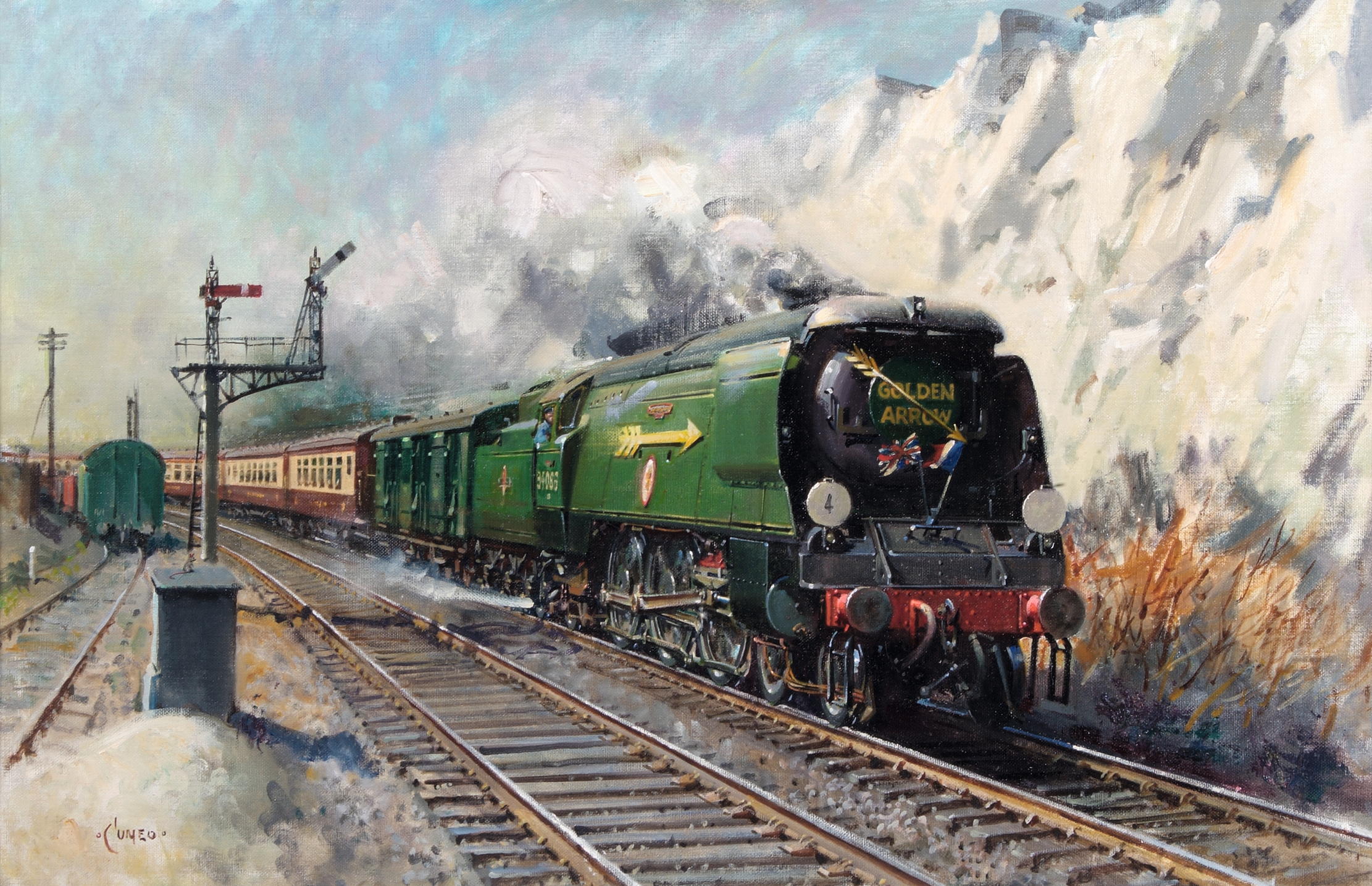
A deafening roar tore through the air, a plume of steam rose to join the clouds and a locomotive hurtled into view on September 27, 1825, pulling wagons full of coal, flour and people into Darlington station — and Britain into the modern era. Driven by its inventor, George Stephenson, Locomotion I had set off earlier from Shildon, Co Durham, and would continue onto Stockton: despite the odd hiccup, the world’s first public railway was officially open.
Nineteen years later, another train burst into view, this time on canvas, closing in on a hare as it crossed the Maidenhead Bridge. J. M. W. Turner presented his Rain, Steam, and Speed 180 years ago, at the June 1844 Royal Academy exhibition. Long accustomed to capturing Nature’s might — storms, avalanches, raging seas — the artist did the same with the power of machinery. Although criticised at the time, Turner’s pioneering subject choice spearheaded what would later become almost a genre: the art of the railway.
At first, artists only tentatively began following in his footsteps. The railway was primarily the preserve of prints and societal attitude towards it was often negative. Turner’s own views may have been ambiguous — some critics have seen Rain, Steam, and Speed as an elegy for the Britain of yore, others as a paean to progress, although, in Railways and Culture in Britain, Ian Carter states that the painting is both ‘about the casualties of progress and the impossibility of not changing’.
No such uncertainty affects John Martin’s The Last Judgement (1853), in which a train plunges into the abyss. After all, the locomotive — the ‘furnace upon wheels’ of poet Walter Landor — was nigh demonic in nature: in 1839, Thomas Carlyle called his first railway journey ‘the likest thing to a Faust’s flight on the Devil’s mantle’. But the very tracks that defiled the countryside also brought it closer: ‘Space is killed by the railways and we are left with time alone,’ wrote the German Heinrich Heine in 1843, who felt ‘as if the mountains and forests of all countries are advancing on Paris’.
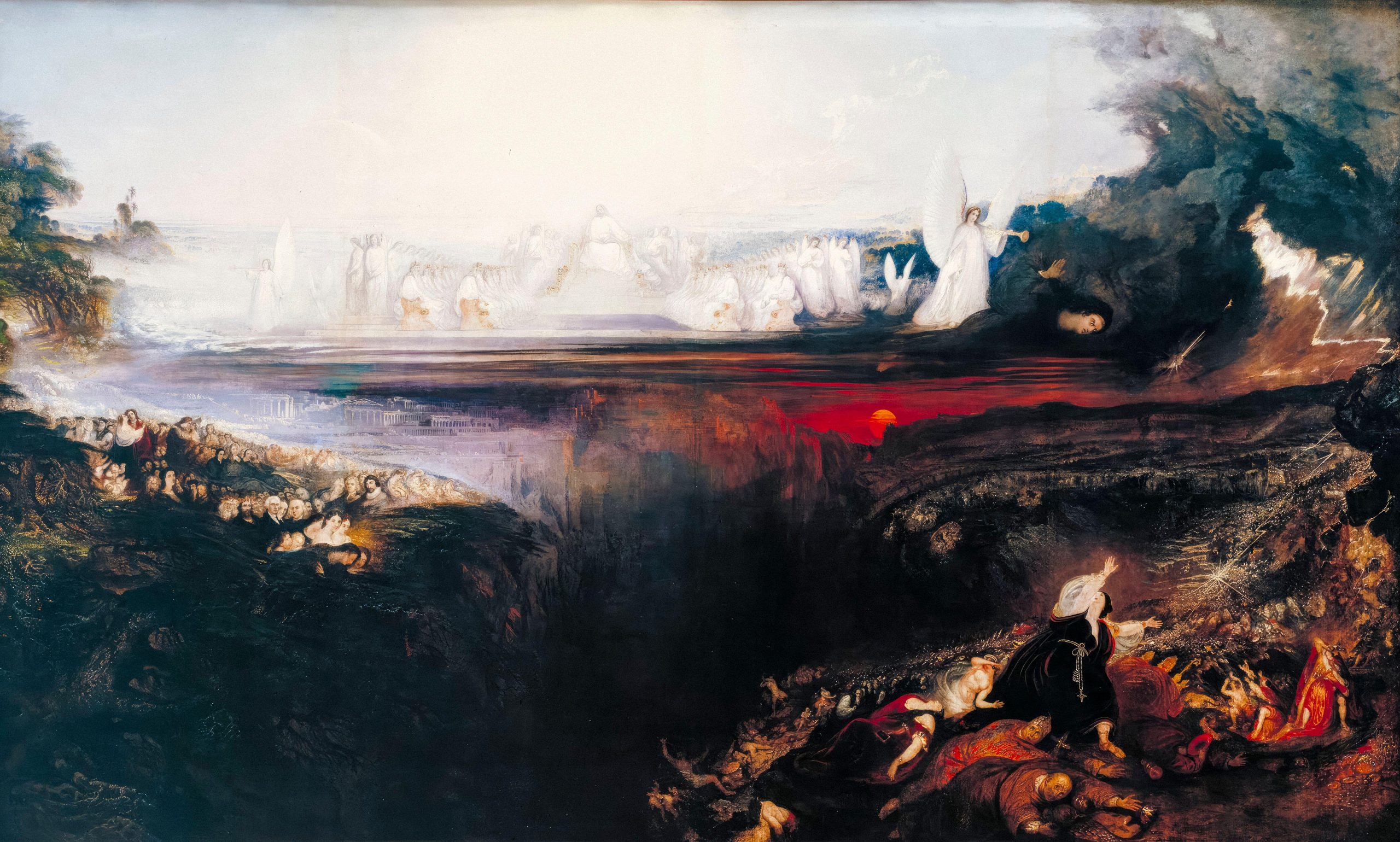
That sense of irrevocable change, of a world on the cusp of being lost as a new one dawns, emerges both from Gnome Watching Railway Train, an 1848 oil by German artist Carl Spitzweg — in which a baffled creature looks down from his cave at the passing wagons — and, more realistically, from The Berlin-Potsdam Railway, painted a year earlier by another German, Adolph Menzel. His locomotive is a puny thing, but its mane of steam still eats its way through a swathe of abandoned fields, as the city spills at furious speed beyond its confines.
Menzel was also one of the first artists to show interest in what happened within a train: the man in his 1851 In a Railway Carriage (After a Night’s Journey) is twisting uncomfortably in his sleep, the woman awake, but exhausted. Perhaps the most arresting compartment scene, however, is Augustus Egg’s 1862 The Travelling Companions, in which two young, elegant ladies, almost identical except for small differences in posture and demeanour, cross what appears to be the French countryside.
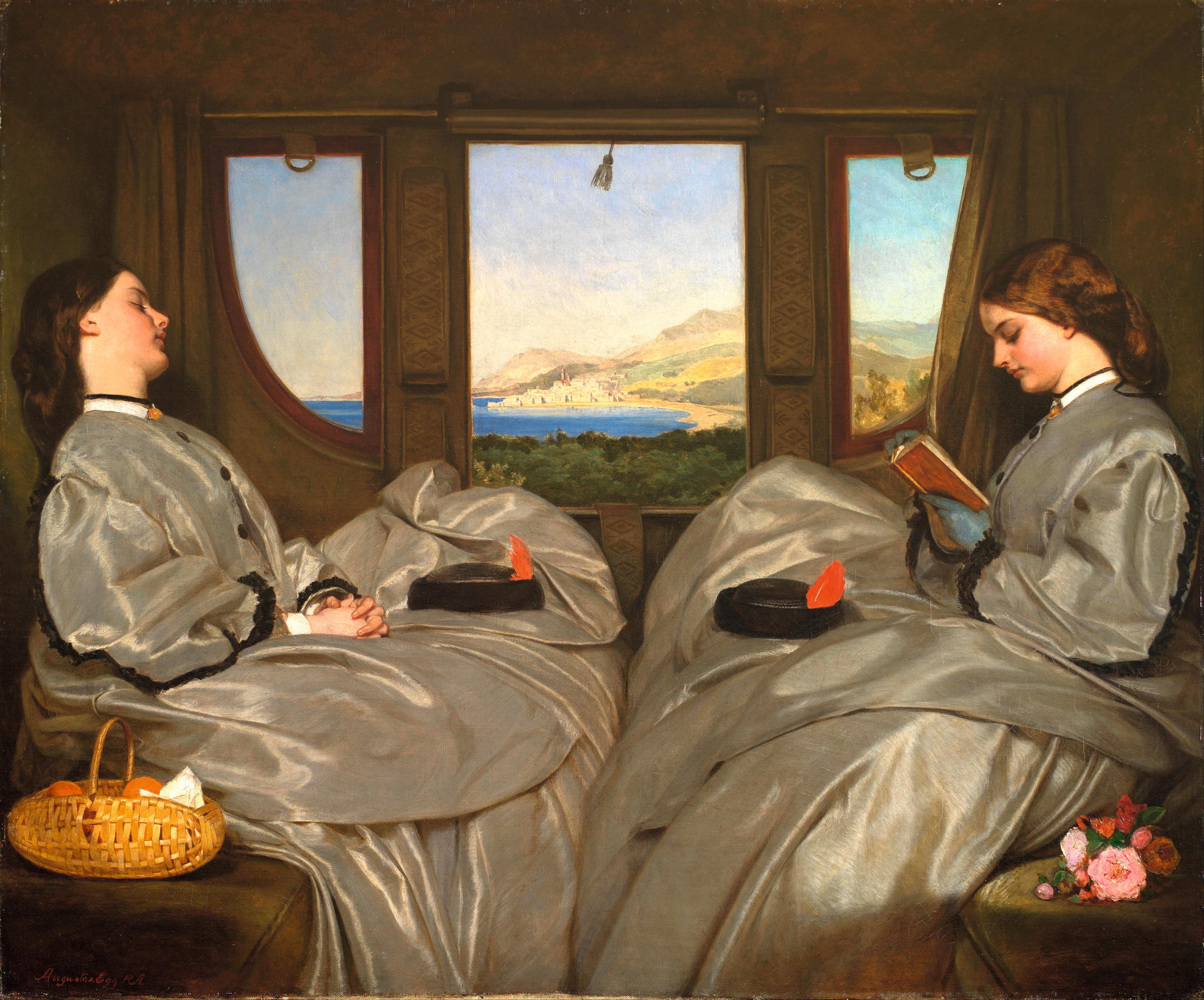
Although the painting is primarily concerned with Victorian womanhood, here, too, the realities of early train travel, which Egg himself experienced as he journeyed across southern Europe, transpire in all their drudgery: the accommodation is cramped, the women’s cheeks are flushed with heat and neither of them spares the landscape even a look: one sleeps, the other reads.
Exquisite houses, the beauty of Nature, and how to get the most from your life, straight to your inbox.
At about the same time, other artists had started portraying la comédie humaine of the stations, the press of people coming and going. In William Powell Frith’s The Railway Station — a remarkably popular painting that attracted more than 21,000 paying visitors when shown in London in 1862 — the women’s skirts may be poofier, the men’s hats and coats longer and the children’s outfits prettier, but his Paddington is no less busy than today.
Impressionism, of whom Turner had in many ways been a precursor, soon picked up the railway baton, whether with Camille Pissarro’s locomotives belching their smoke into the sky above Dulwich in south London (Lordship Lane Station, Dulwich, 1871) or Édouard Manet’s train that, segregated behind cage-like rails and enveloped in a cloud of white steam, absorbs the attention of a little girl, as her older companion stares wistfully from the canvas (The Railway, 1873).
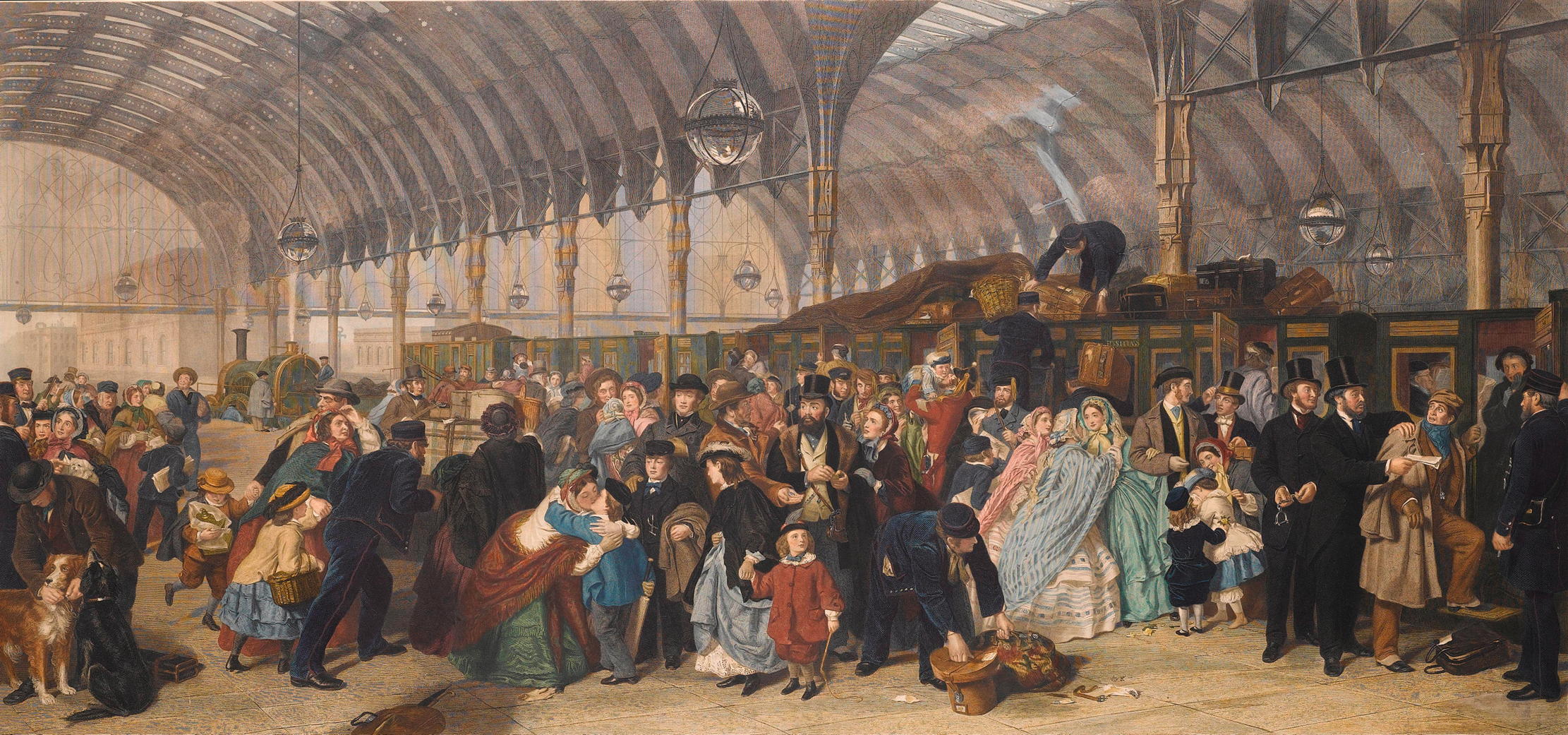
Claude Monet, in particular, was so intrigued by the railway that he sought (and obtained) permission, in 1877, to set up his easel at Paris’s Gare Saint-Lazare. According to Jean Renoir (son of the Impressionist Pierre-Auguste), Monet, keen to paint smoke ‘so thick you can hardly see a thing’, sweet-talked the Saint-Lazare director, implying he had picked the smaller station over its rival Gare du Nord. As a result, he was allowed to do all he wanted: indeed, Renoir tells a (possibly tall) tale that ‘trains were all halted; the platforms were cleared; the engines were crammed with coal, so as to give out all the smoke Monet desired’.
As the 19th century faded into the 20th, tracks started slashing through the countryside in much of the world and many artists embraced the railway as a subject — not least van Gogh. In his 1890 Landscape at Auvers after the rain, a locomotive trails steam across a mosaic of fields, as a horse and cart trudge in the opposite direction. For one art movement in particular — Italy’s Futurism — trains became almost totemic. ‘We will sing…of the gluttonous railway stations devouring smoking serpents… of great-breasted locomotives, pawing the rails like enormous steel horses with long tubes for bridle,’ founder Filippo Tommaso Marinetti promised in the group’s 1909 Manifesto.
And sing they did: Futurist trains blast across the canvas in a blaring of colours and shapes that almost conjures the rattle of wheels on rails — especially in Dynamism of a Train (1911) by Luigi Russolo, also a composer, who invented new musical instruments that reproduced the noises of the Industrial Revolution. The Futurist railway transcends reality, becoming States of Mind, as hinted by Umberto Boccioni’s 1911 triptych of that name: an emblem of progress, but also chaos and, for those left behind, longing.
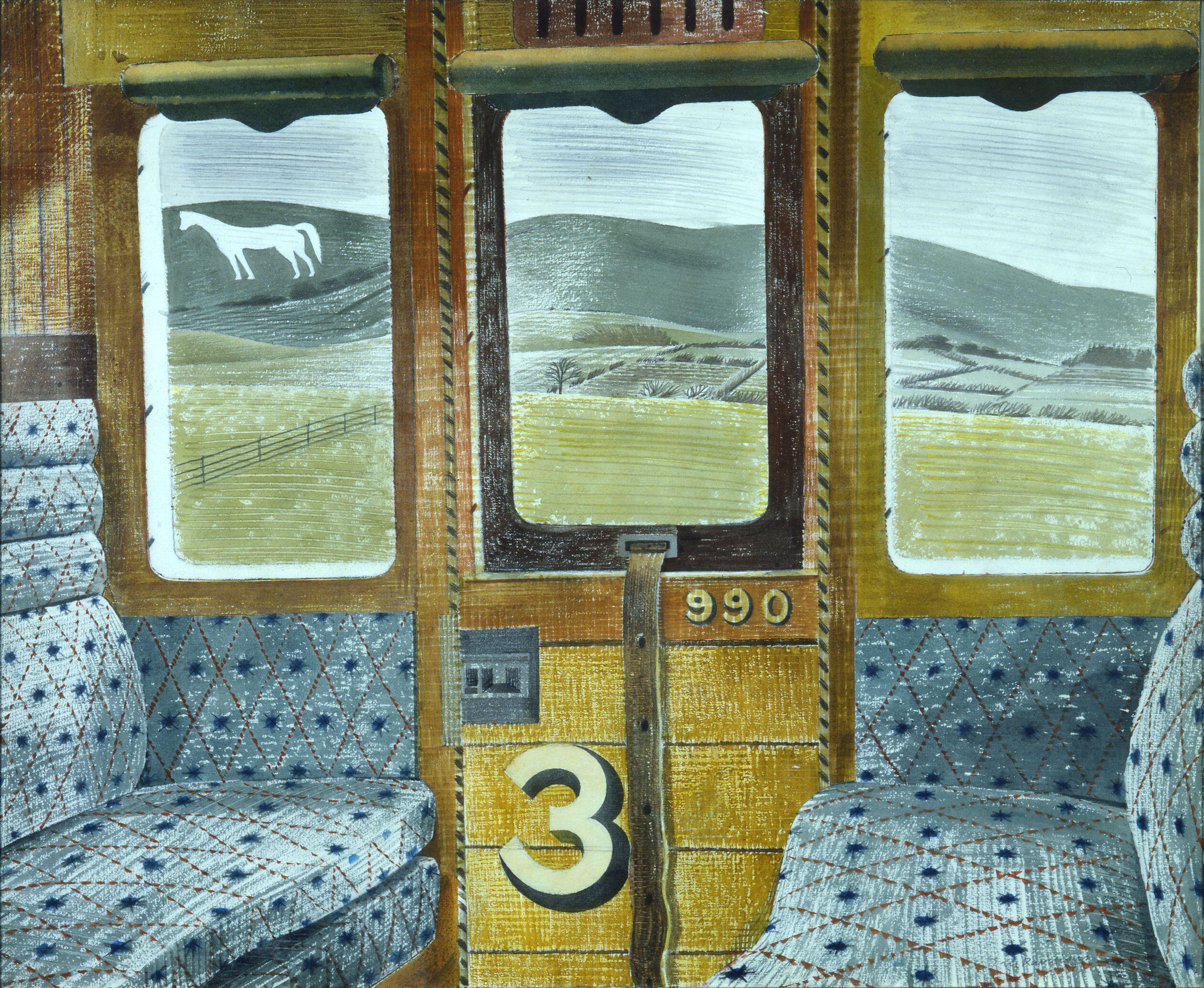
As the Futurists dreamed up their careering machines, Edward Hopper started painting very different railway scenes, made of empty tracks, atmospheric stations and semi-deserted carriages, such as the 1938 Compartment C, Car 293, in which a solitary woman shuts out the passing world with her book. Although Hopper’s wife, Josephine, noted he loved train journeys, his paintings often convey a sense of alienation and have a haunting stillness about them: they portray liminal spaces between rural past and industrial present (Railroad Sunset) and eerie, isolated or forgotten slices of America (Dawn in Pennsylvania, House by the Railroad, New York, New Haven and Hartford).
Eric Ravilious’s 1939 Train Landscape, one of the last works he did before becoming a war artist, is equally still, but tinged with tender nostalgia, rather than melancholy. The window in his third-class carriage — old and well-loved, empty, but not bleak — is almost an invitation to look with fresh eyes at the Westbury White Horse’s English Arcadia, finding that ‘surprising in the ordinary’, which, as Christopher Neve suggested in Country Life in 1972, was the artist’s cypher.
Nostalgia would soon become entwined with the railway. Although trains had been mysterious, even sinister presences during much of the 20th century — not least in the works of Giorgio de Chirico (puffing in the distance behind his forlorn squares and colonnades) and Paul Delvaux (looming near his wide-eyed, almost invariably naked women) — the fire-breathing demons of the past had slowly turned into a cherished part of the landscape. By the advent of diesel engines in the 1960s, painters such as Terence Cuneo, a co-founder of the Guild of Railway Artists (www.railart.co.uk), yearned for the golden age of steam. ‘In my mind’s eye, I can still see the wondrous apple-green monsters, brass domes dazzling and dimming as they flashed and faded through the sunshine of a bright day,’ he wrote in The Railway Painting of Terence Cuneo.
There were, however, exceptions to this mood: on September 19, 1963, at the railway station in Perpignan, France, Spanish Surrealist Salvador Dalí ‘had an exact vision of the constitution of the universe,’ as he later recalled in Diary of a Genius. He brought it to life in his explosive Perpignan Station (1965), where he appears twice, springing in the air above and below a train, as four beams of light burst into a Maltese cross from the heart of the station ‘where the whole universe must converge’. The town’s grateful residents have since commissioned a statue of Dalí in Levitation and, inside the station, a sign modestly informs travellers they have reached the ‘centre du monde’.
However, it’s another sculpture that claims the palm for the boldest railway-art project ever created. Made from an astounding 185,000 bricks, including 20 hollow ones that can double up as bat roosts, Train by David Mach is a 95ft-long model of Mallard, the steam locomotive that broke the world record for speed in 1938. It spurts, steam a-billowing, from a grass bank just outside Darlington, where it all began.
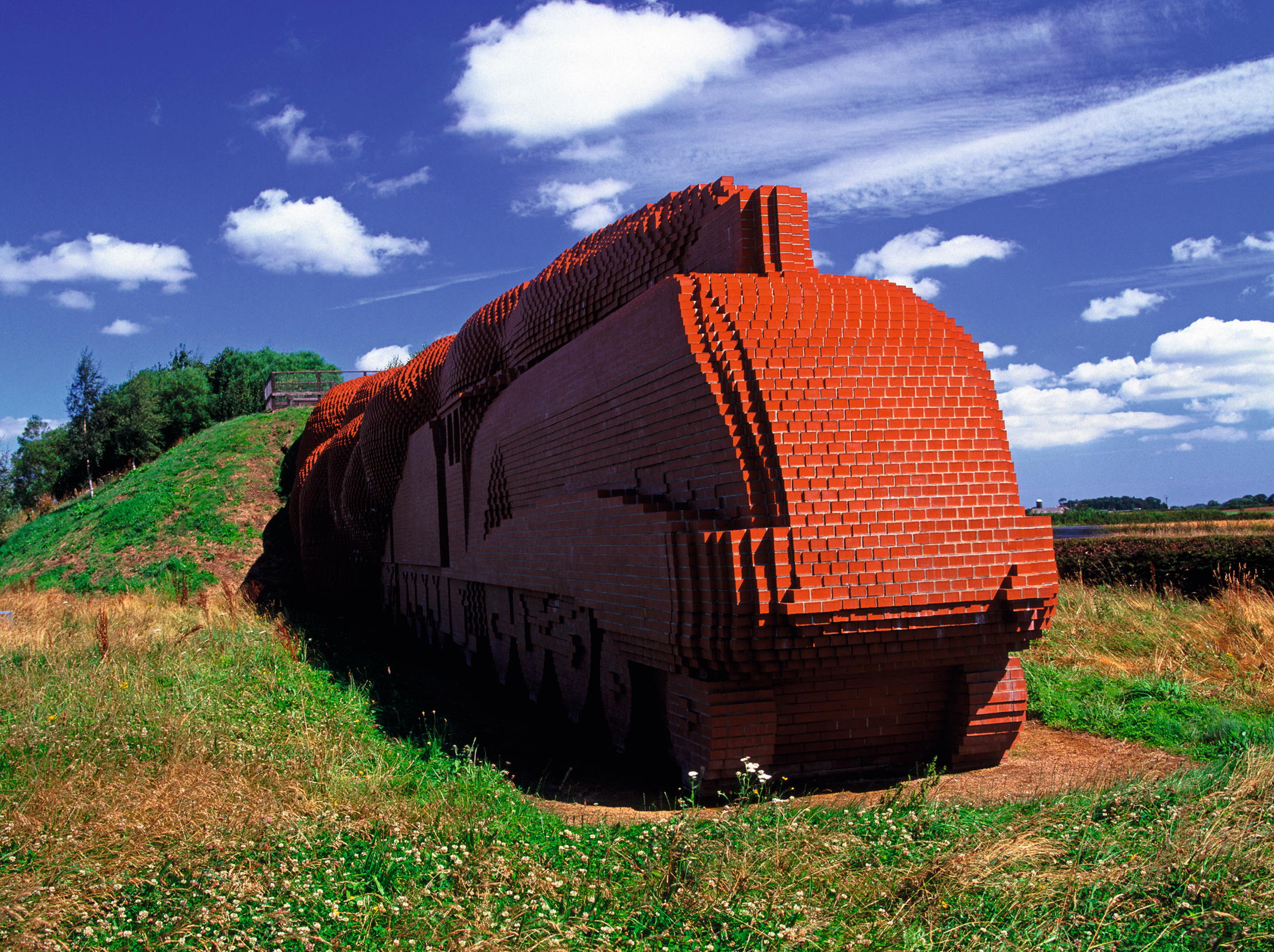
Carla must be the only Italian that finds the English weather more congenial than her native country’s sunshine. An antique herself, she became Country Life’s Arts & Antiques editor in 2023 having previously covered, as a freelance journalist, heritage, conservation, history and property stories, for which she won a couple of awards. Her musical taste has never evolved past Puccini and she spends most of her time immersed in any century before the 20th.
